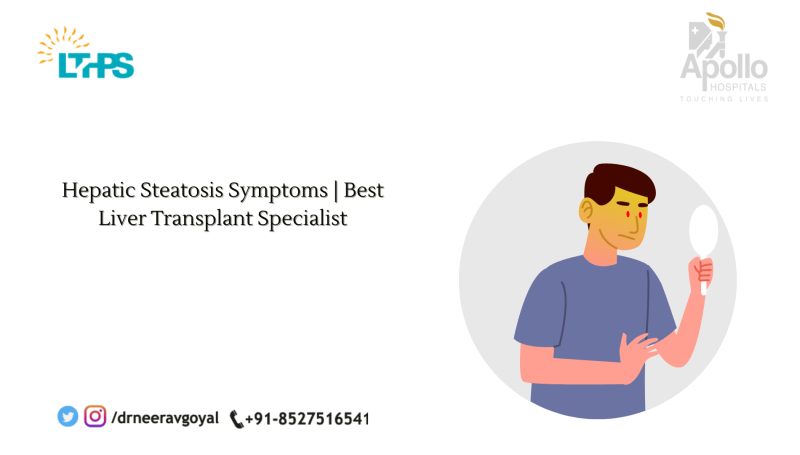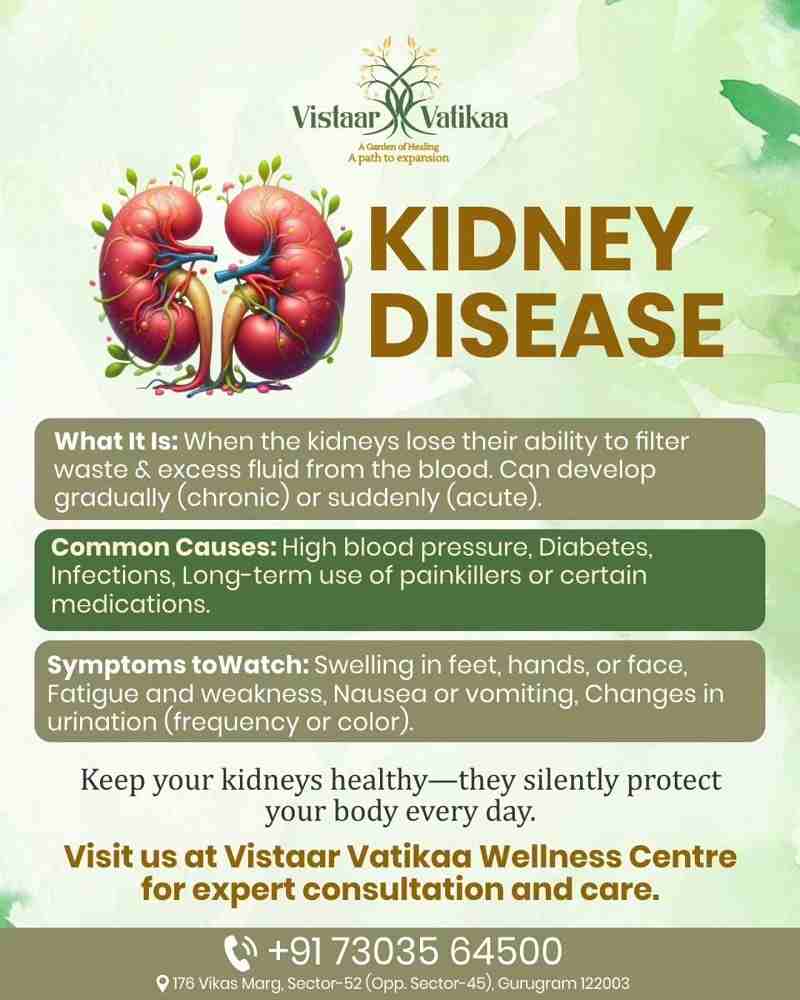Health
Hepatic Steatosis Symptoms | Best Liver Transplant Specialist

Introduction
Have you ever heard the term “fatty liver”? That’s what doctors usually call hepatic steatosis. It happens when too much fat builds up in your liver, making it harder for this vital organ to do its job. The liver is like the body’s personal filter—it removes toxins, processes nutrients, and keeps things running smoothly. But when fat sneaks in and takes over, problems begin.
What makes hepatic steatosis tricky is that it often shows little to no symptoms in the early stages. Many people don’t even know they have it until a routine check-up reveals something unusual. But if ignored, it can lead to severe conditions like liver inflammation, scarring (cirrhosis), or even liver failure.
In this article, we’ll break down the symptoms of hepatic steatosis in simple language. We’ll also guide you on when it’s time to consult the Best Liver Transplant Specialist so you can protect your health before it’s too late.
Learn the symptoms of hepatic steatosis, its causes, and treatment options. Find guidance from the Best Liver Transplant Specialist.
1. What is Hepatic Steatosis (Fatty Liver)?
Hepatic steatosis, commonly known as fatty liver, is a condition where extra fat collects in the liver cells. Normally, your liver contains a little bit of fat, but when this fat makes up more than 5–10% of the liver’s weight, it becomes a problem.
Think of it like a sponge that’s supposed to soak up and clean water. If oil (fat) clogs the sponge, it can no longer do its job. That’s exactly what happens to the liver in hepatic steatosis.
2. Why the Liver Matters So Much
The liver is the body’s chemical factory and filter. It:
- Removes toxins from blood
- Helps digest food by producing bile
- Stores vitamins and minerals
- Manages sugar and cholesterol levels
When fat builds up, the liver’s ability to perform these functions slows down, leading to various health issues.
3. Types of Hepatic Steatosis
There are two main types:
- Non-Alcoholic Fatty Liver Disease (NAFLD): Common in people who don’t drink much alcohol. Often linked to obesity, diabetes, and poor lifestyle.
- Alcoholic Fatty Liver Disease (AFLD): Caused by heavy drinking over time.
Both types can progress silently, but their symptoms eventually overlap.
4. Common Symptoms You Shouldn’t Ignore
Most people with hepatic steatosis feel perfectly fine at first. However, some may notice:
- Constant fatigue
- Unexplained weight gain or loss
- Discomfort or pain in the upper right abdomen
- Loss of appetite
- Mild jaundice (yellowish skin and eyes in severe cases)
5. Early Warning Signs of Fatty Liver
Hepatic steatosis often gives subtle hints before progressing:
- Feeling tired even after sleeping well
- Trouble concentrating (sometimes called “brain fog”)
- Bloating after meals
- Mild discomfort near the liver area
6. Advanced Symptoms in Later Stages
If left untreated, fatty liver can progress into non-alcoholic steatohepatitis (NASH), cirrhosis, or liver failure. Symptoms may include:
- Severe abdominal swelling (ascites)
- Swelling in the legs (edema)
- Easy bruising and bleeding
- Confusion due to toxin buildup (hepatic encephalopathy)
- Noticeable jaundice
7. Who Is at Risk of Developing Hepatic Steatosis?
You may be at higher risk if you:
- Are overweight or obese
- Have diabetes or prediabetes
- Have high cholesterol or triglycerides
- Drink excessive alcohol
- Take certain medications like steroids
- Have a family history of liver disease
8. Causes Behind Hepatic Steatosis
The main causes include:
- Unhealthy diet (too much fried, processed food)
- Sedentary lifestyle (little to no physical activity)
- Alcohol consumption
- Metabolic conditions like obesity and diabetes
- Genetics (family history plays a role)
9. How Doctors Diagnose Hepatic Steatosis
Since symptoms are often silent, diagnosis usually requires tests:
- Blood tests (liver function tests)
- Ultrasound scan of the liver
- CT or MRI scans for detailed imaging
- Liver biopsy in serious cases
10. Why Symptoms Are Often Silent
The liver is known as a “silent organ” because it doesn’t easily show distress until damage is advanced. That’s why regular check-ups are so important, especially if you have risk factors.
11. Possible Complications if Untreated
If ignored, hepatic steatosis can lead to:
- NASH (Non-Alcoholic Steatohepatitis)
- Fibrosis (scarring)
- Cirrhosis (advanced liver damage)
- Liver cancer
- Liver failure (requiring a transplant)
12. Lifestyle Changes to Manage Symptoms
The good news is, fatty liver can often be reversed with healthy choices:
- Eat a balanced diet rich in vegetables, fruits, and lean proteins
- Avoid alcohol and processed foods
- Exercise at least 30 minutes daily
- Stay hydrated
- Maintain a healthy weight
13. Medical Treatments and Support
Currently, there is no single “magic pill” for fatty liver. But doctors may recommend:
- Medications to manage diabetes, cholesterol, or high blood pressure
- Vitamin E or other supplements in some cases
- Weight loss programs
- Monitoring with regular scans and blood tests
14. When to See the Best Liver Transplant Specialist
You should see the Best Liver Transplant Specialist if:
- Your fatty liver has progressed to cirrhosis or end-stage liver disease
- Symptoms like jaundice, swelling, or confusion are worsening
- Doctors suggest advanced treatments like a liver transplant
A liver transplant is usually the last resort, but consulting the right specialist early can help you avoid reaching that stage.
15. Conclusion
Hepatic steatosis may sound scary, but the good news is that it’s often preventable and reversible with timely care. The key lies in recognizing the symptoms early, making healthy lifestyle choices, and getting regular check-ups. If things get complicated, don’t delay seeking advice from the Best Liver Transplant Specialist—your liver is too important to ignore.
16. FAQs
1. What is the most common symptom of hepatic steatosis?
Fatigue is the most common symptom, although many people may not notice any early signs.
2. Can fatty liver go away on its own?
Yes, in many cases, lifestyle changes like diet and exercise can reverse fatty liver.
3. Is hepatic steatosis dangerous?
On its own, it may not be dangerous, but if untreated, it can progress to cirrhosis or liver failure.
4. How is fatty liver detected?
It’s usually detected through blood tests and imaging like ultrasound, often during routine health check-ups.
5. When should I see the Best Liver Transplant Specialist?
If you have advanced liver disease, cirrhosis, or worsening symptoms like jaundice, abdominal swelling, or confusion.
Source:
Click for the: Full Story
You might like













 Close Menu
Close Menu